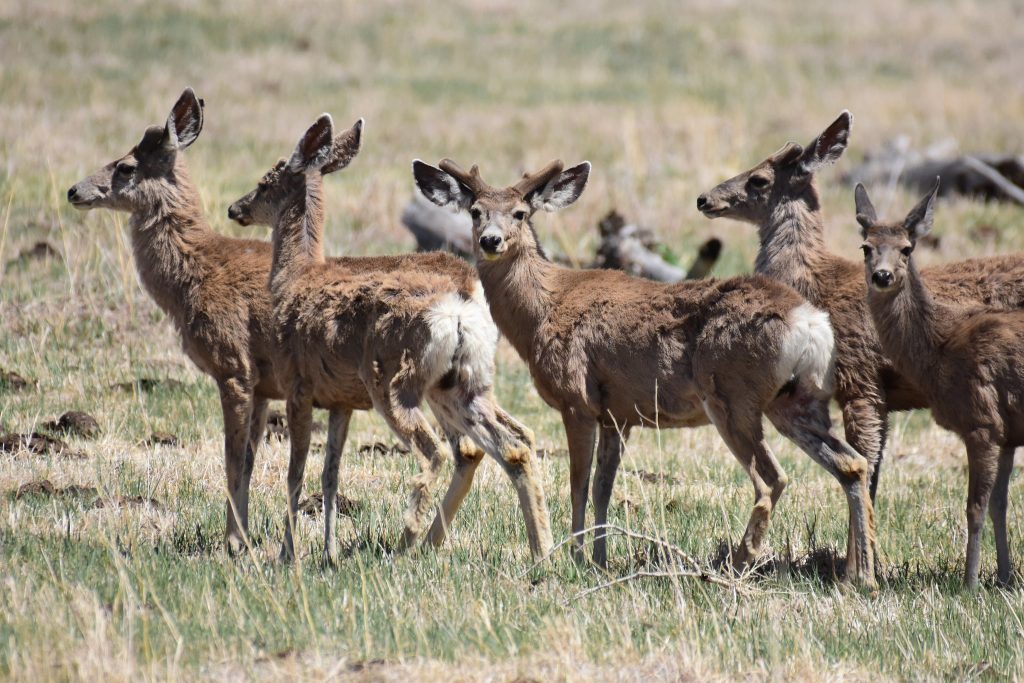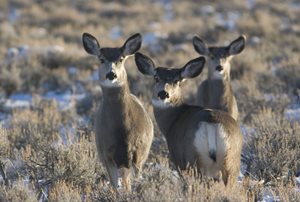Migration Corridors
New research shows migrating mule deer avoid areas of energy development, passing on the best, most nutritious plant growth – the primary reason for seasonal migrations. A collaborative study by the U.S. Geological Survey (USGS) and the University of Wyoming determined mule deer miss out on forage when energy development disrupts their migration corridors. “Mule…
It seems a pronghorn family reunion would be very crowded – and not very diverse. A new study, lead by University of Wyoming Ph.D. candidate Melanie LaCava, has been studying the genetics of Wyoming’s pronghorn herds. Wyoming is home to roughly half of North America’s pronghorn population – approximately 750,000 individuals. Their findings show that,…
A new University of Wyoming study shows mule deer are a bit picker than previously thought. After studying 15 years of movement data collected from deer GPS collars, researchers from the University of Wyoming and Western Ecosystems Technology have discovered that mule deer are less likely to use their migration corridors if the land is…
The Wyoming Wildlife Federation has clear message: yes to the Governor, no to the House. The Federation is strongly opposed to House Bill 29, which proposes an alternative to Governor Gordon’s migration corridor executive order. Their bill has similar goals but, according to a strongly worded email from the Federation “The steps outlined in the…
-
Pages



